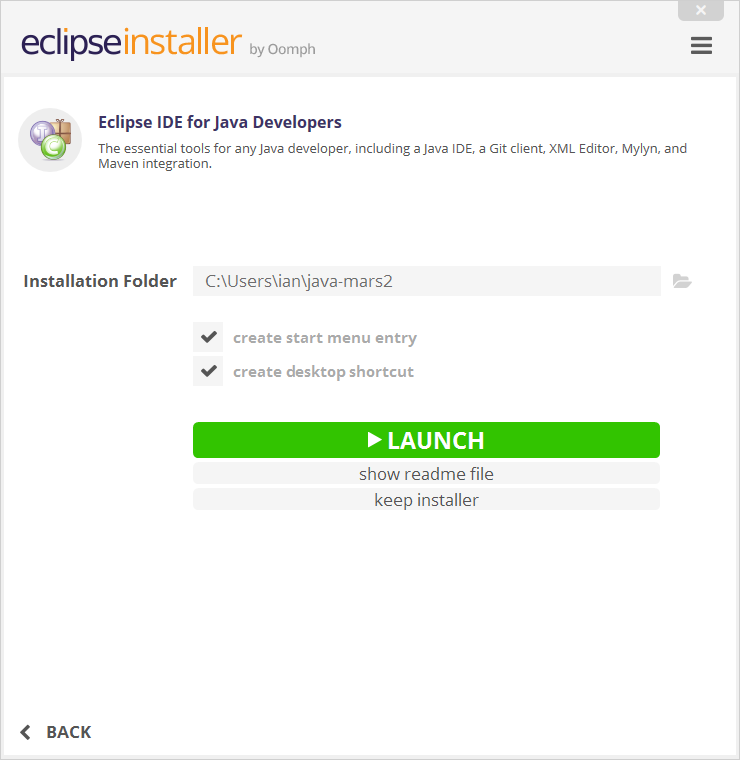
- #IDE FOR MAC JAVA ANDROID#
- #IDE FOR MAC JAVA SOFTWARE#
- #IDE FOR MAC JAVA CODE#
- #IDE FOR MAC JAVA DOWNLOAD#
- #IDE FOR MAC JAVA MAC#
For further information, please contact us. We are also a leading digital marketing company providing SEO, SMM, SEM, Inbound marketing services, etc at affordable prices. We offer all kinds of web design and Mobile app development services to our clients using the latest technologies. This collection consists of the best Java IDEs for novice and experienced Java programmers to develop stable, powerful, and user-friendly applications.Īcodez is a renowned web development company and web application development company in India.
#IDE FOR MAC JAVA ANDROID#
Of the many IDEs for java programming, this article covers the top 10, including Eclipse, IntelliJ IDEA, BlueJ, NetBeans, JDeveloper, Android Studio, JGrasp, JCreator, Greenfoot, and DrJava. Java IDEs are the best for programmers because they enable developers to save on time and effort, document their projects, and meet the set application standards. Java is one of the easiest and most popular computing platforms worldwide, thanks to its versatility in creating stable and secure web, mobile, and enterprise applications.
#IDE FOR MAC JAVA DOWNLOAD#
#IDE FOR MAC JAVA SOFTWARE#
#IDE FOR MAC JAVA CODE#
#IDE FOR MAC JAVA MAC#
It has support for Linux, Windows, Solaries, and Mac OS.It comes with support for Java 8.0 and 9.0.With these basics about IDEs, let’s have a look at the leading IDEs for Java programming. Many IDEs support project management because they have documentation tools, which automate developers’ entry of comments or require them to write comments across different areas of a project. The availability of predefined templates for a given IDE also makes it easy to share code libraries among a team of developers, leading to quality project output.

IDEs also enable developers to meet project or company standards because they facilitate an environment where a group of developers can agree to a standard way of working. IDEs come with multiple tools and features, which enable web and app developers to organize resources, access shortcuts, and prevent errors. Why use IDEs?ĭevelopers use IDEs to save on time and effort spent during programming. It comes with text editors, compilers, debuggers, and other capabilities, enabling developers to automate, test, and analyze the development flow of an application. It is a graphical user interface (GUI)-based platform, whose best features are measured by factors, such as language support, OS requirements, and IDE-specific costs, among others. Meanwhile, JUnit has advanced to version 5, breaking integrations IDEA and Eclipse both have native support for JUnit 5, but as of this writing NetBeans does not.Īll of these changes should be part of your evaluation of an IDE, whether for general use or for a particular project.An IDE is a platform developers use to create codes and applications within a framework comprising all the necessary features and facilities. Java EE 8 was also the final Java enterprise release from Oracle: The Eclipse Foundation has taken charge of stewarding the technology, which it has rebranded to Jakarta EE. Java EE 8 introduced or updated many Java technology specifications, including JSON-B (JavaScript Object Notation Binding), Java EE Security, Servlet 4.0, and JSF (JavaServer Faces) 2.3 for building server-side user interfaces.

In those intervening years the Java language, APIs, JVM ecosystem, and some frameworks have evolved significantly.

This IDE review was first published in September 2016, and has been updated in December 2018. I also checked out several open source Java projects so that I could test all of the IDEs on the same projects. For this roundup, I did fresh installations of IntelliJ IDEA Ultimate 2018.3, Eclipse IDE 2018‑09 for Java EE Developers, and Apache NetBeans (incubating) IDE 9 on a Mac.


 0 kommentar(er)
0 kommentar(er)
